Annabelle Harty and Sheelagh Boyce have been friends since they first met in Glasgow in the 1980s. They went on to take different geographic and career directions but a few years ago they began to make quilts together & in 2019 they exhibited for the first time in Scotland at DES. They recently exhibited at Glasgow Print Studio as part of Glasgow International & are currently exhibiting at Mount Stuart on the Isle of Bute.
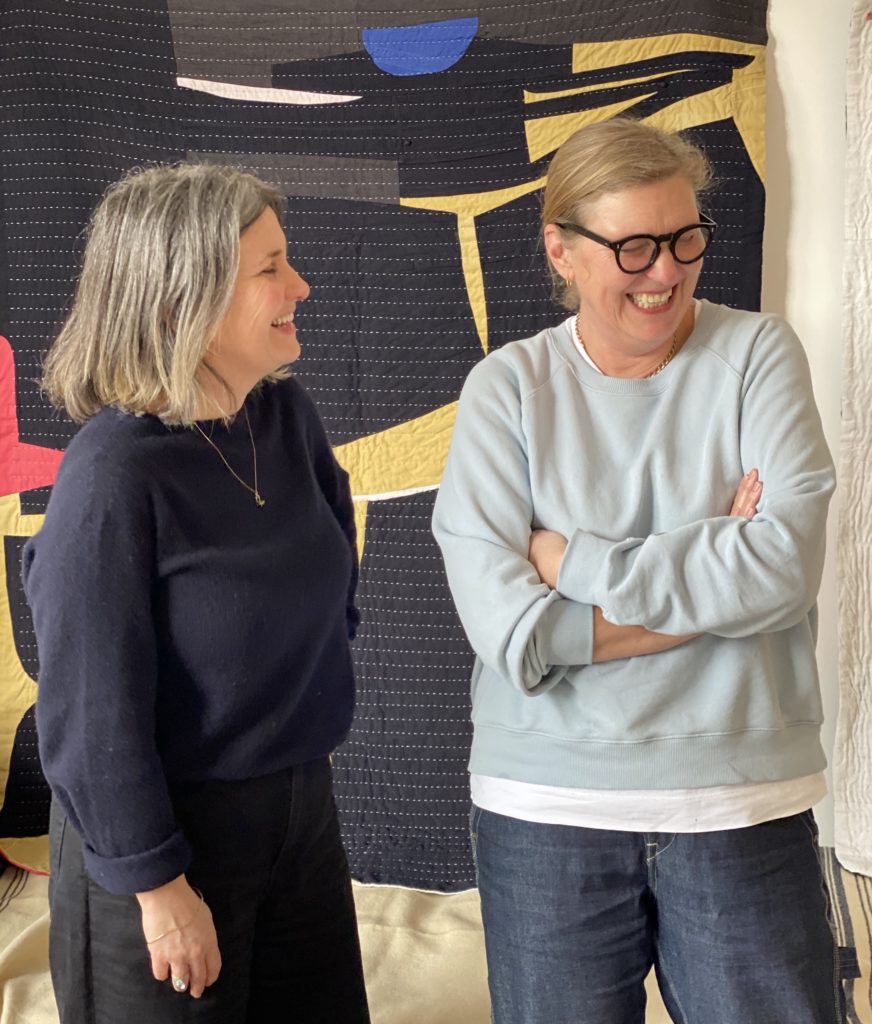
What’s the view from the windows where you work?
From the Glasgow studio mainly sky and from studio in Wiltshire, trees with the odd chicken passing by.
You have known each other since the 1980s & have previous & concurrent careers, so what prompted the founding of AWPCYW in 2016? And how did its name, Arrange Whatever Pieces Come Your Way come about?
Sheelagh had started to make quilts. We are close and talk often. We decided to make a quilt together and very quickly realised there was a common language we share that came to us very naturally through the process, so we decided to make a small collection to see where it took us. Our name comes from the diaries of Virginia Woolf: “Never mind, arrange whatever pieces come your way. Never be unseated by the shying of that undependable brute, life . . .”. We prefer not to work under our own names, but as a collective.
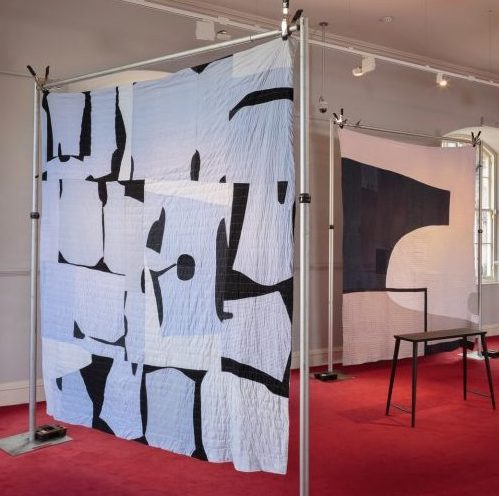
AWPCYW at Design Exhibition Scotland in 2019 – Quilt 12 (back) & Quilt 9 (front), Lyon & Turnbull, Edinburgh. Image Ruth Clark.
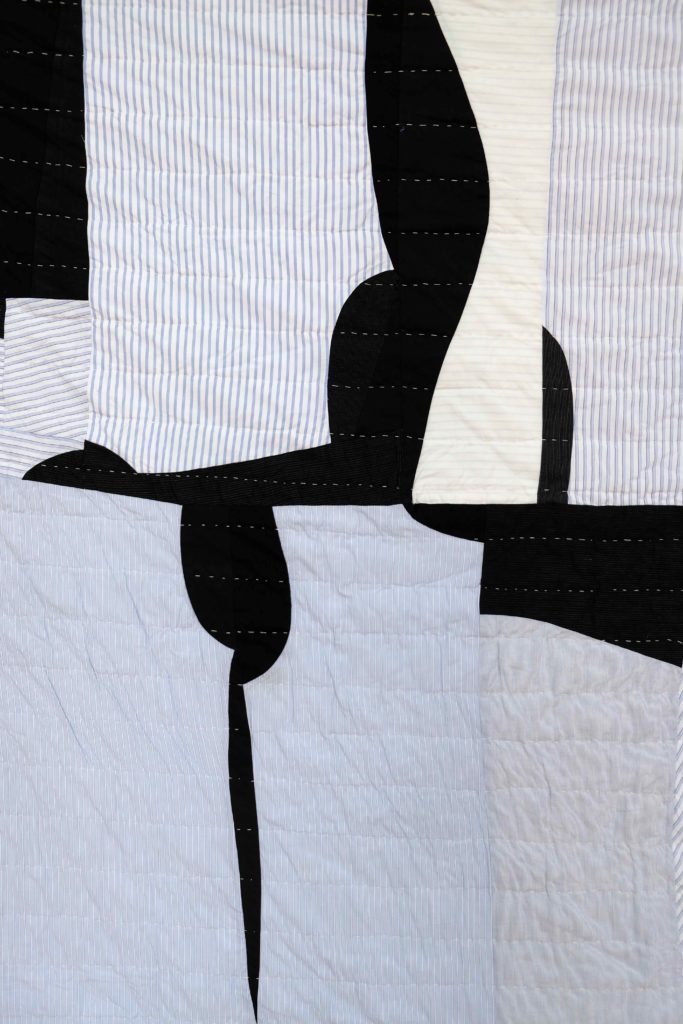
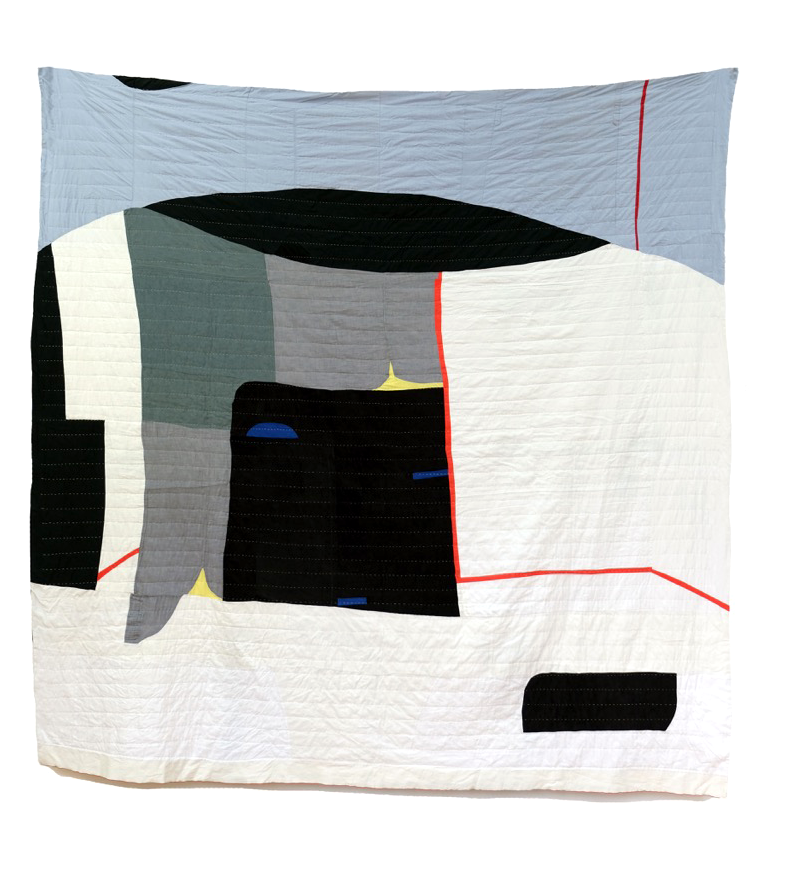
Quilt making is frequently a communal activity, and you work together but separately — Sheelagh works from Glasgow, Annabelle in Wiltshire. How does this work practically?
This has never been an issue. We work together in both studios and happily travel between the two. We tend to do the hand quilting apart, but the rest of the process we like to carry out together, as it is our common eye that we are interested in.
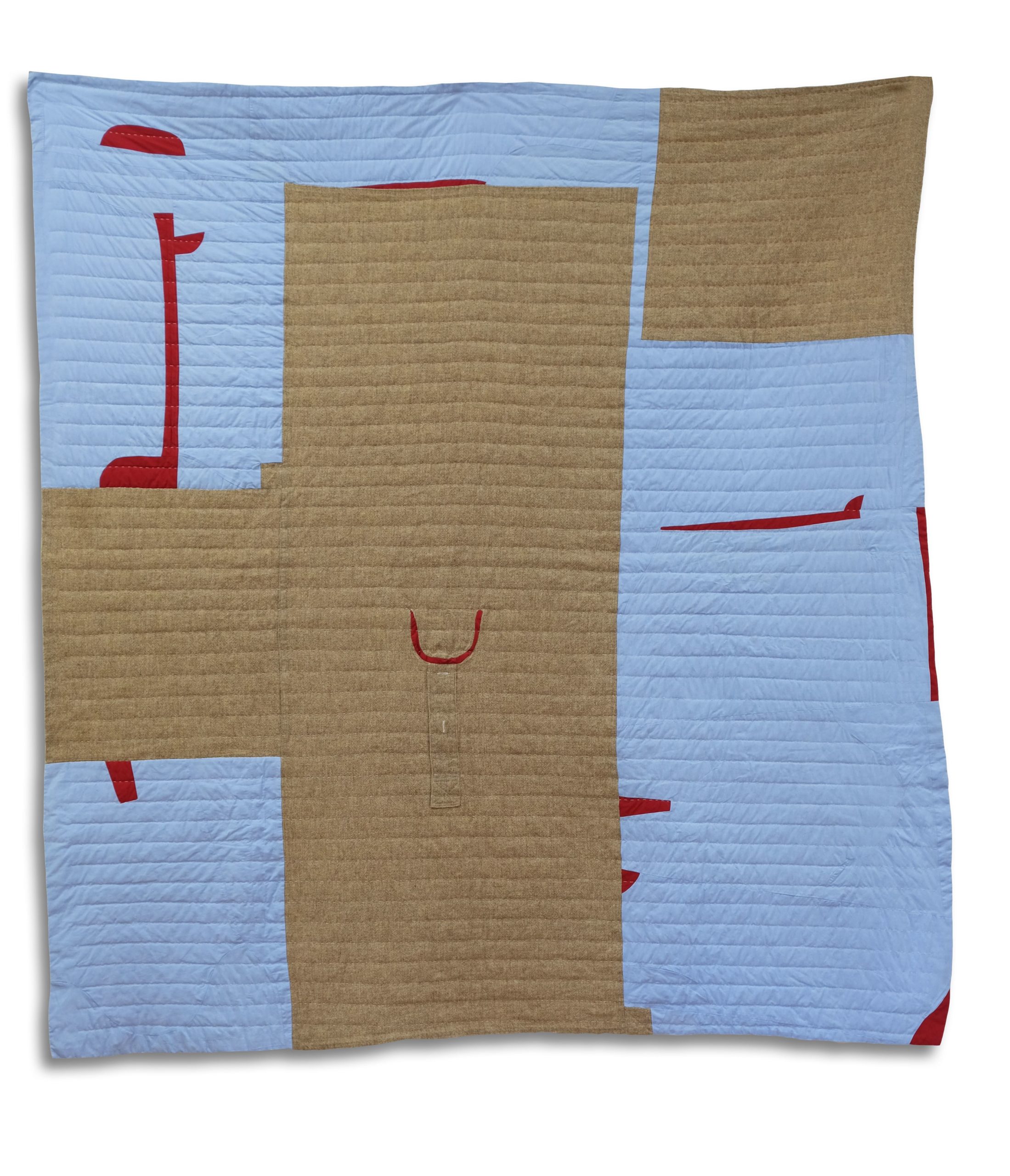
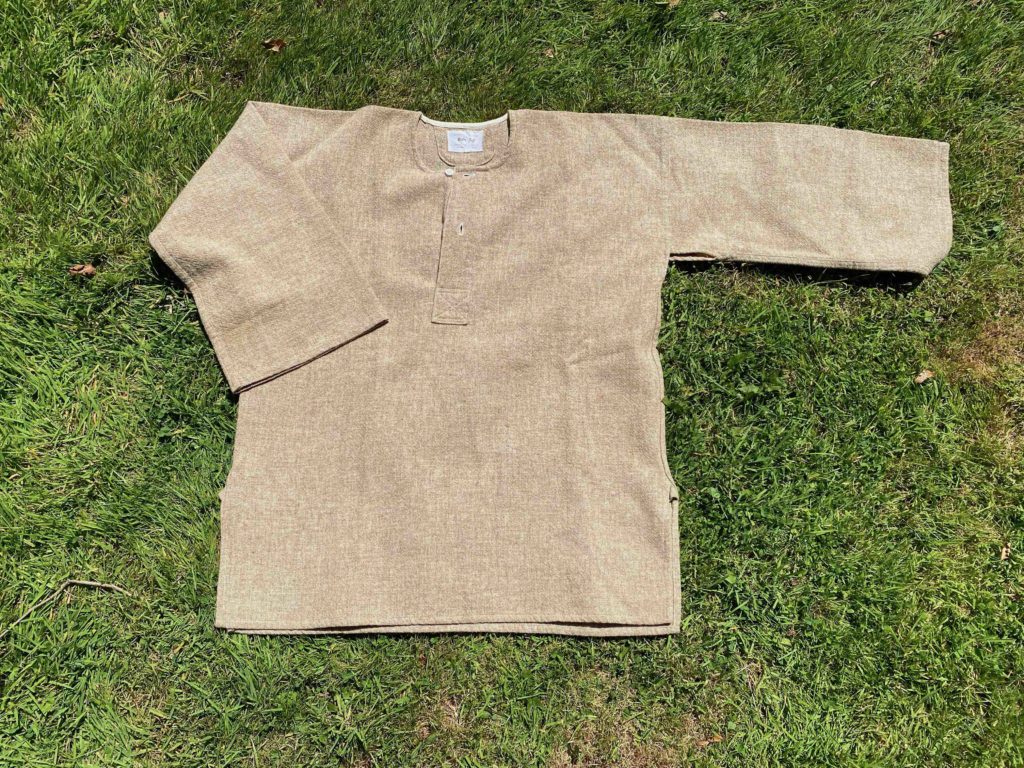
There is currently a more visible interest in quilt making – work by The Gee’s Bend Quiltmakers from near the Alabama River in Georgia were recently on show at Alison Jacques Gallery, London. Do you feel there is a vital re-appraisal of quilts and the women who frequently make them?
We delight in our freedom from quilting traditions. The recent exposure of the amazing work of the Gee’s Bend quilters, in the UK has certainly brought the process to light. We would hope that this might help us to reappraise the quilts at the back of our cupboards, made by our relatives for their artistic integrity as a result. We would encourage everyone to quilt moving forward.
Modernist buildings of the Glasgow architectural practice of Gillespie, Kidd & Coia, the designs of the Japanese-American landscape architect & designer Noguchi & lichen on stone walls have all inspired your work. How does your design process begin?
There is a tussle at the start of each quilt between the subject that drives the initial idea – generally a building or place – with the garments we select to use. In some cases the clothes, once unpicked, introduce irresistible elements that take the composition in an unexpected direction. We often dance around them at this stage, sometimes shelving them for a time, until we find the right balance between the two.
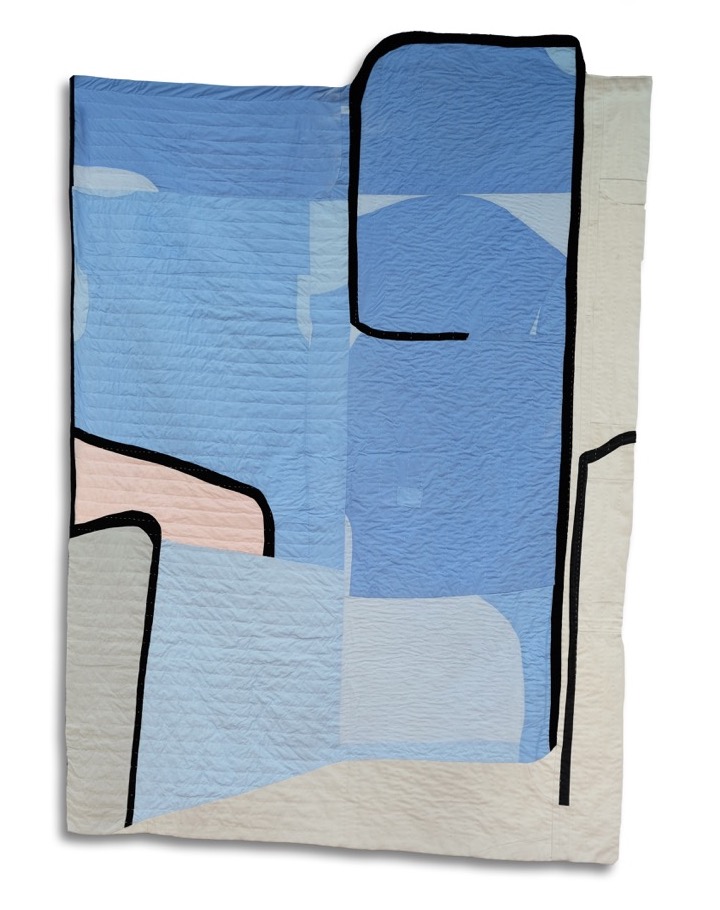
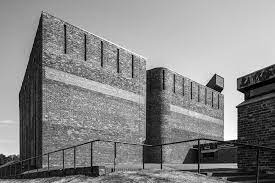
We have recently made a small series of three quilts using the architecture of the clothes as the starting point. We worked with three woollen Welsh steel workers vests and three cotton kimonos. Like much of the pattern cutting of traditional workwear, we were excited by the economy of the geometry of the deconstructed clothes – turning them back into the initial bolt of fabric once unpicked – a stark contrast to the standard clothing patterns we have been working with.
Your quilts are handstitched & all the material you use is sourced from hand-me-down clothes belonging to friends & family. How is the design process shaped by the fabric, its colour, texture, even memories of remembering the clothes been once worn?
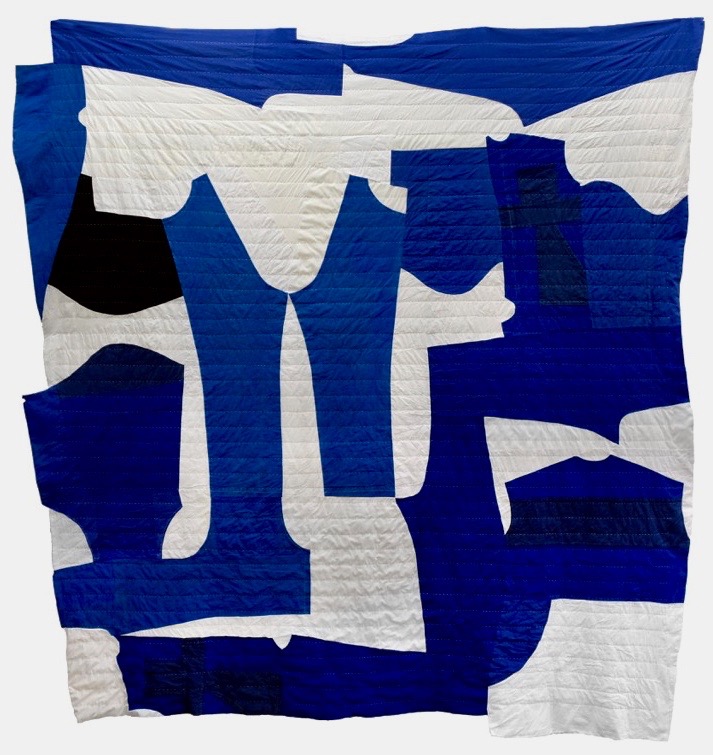
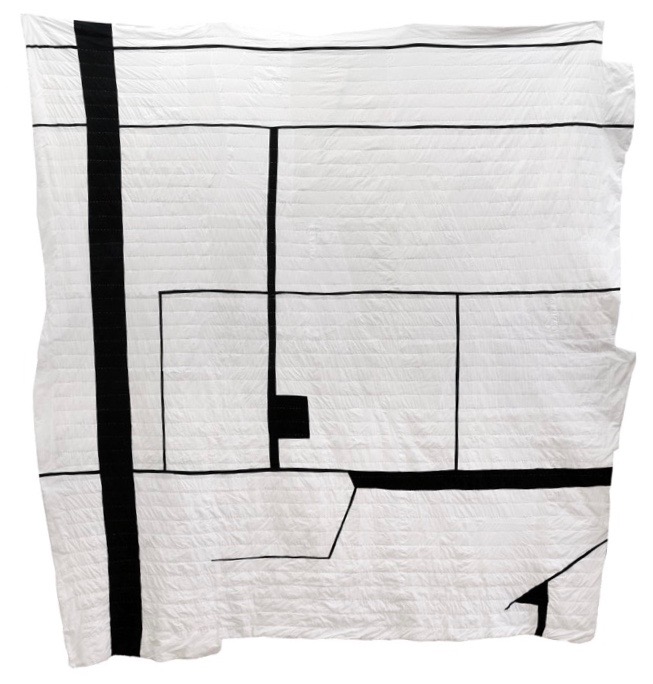
We quite like the secret stories of the people and places that are stitched into our quilts – layers of story telling that have significance to the two of us. In each case we try to bring these into their composition. However we find that everyone reacts to them differently. Some people are taken by this and are keen to know more, while others prefer to layer their own relationship with the quilt over these tales.
You talk about the importance of architecture, art, food & fashion to your lives. Who has recently piqued your interest in these disciplines?
Artist Sam Ainsley, former head of the MFA at Glasgow School of Art, recently sent us a book by the late Japanese graphic designer Oka Hideyuki How To Wrap Five Eggs. Beyond the obvious inspiration one can draw from the beauty of the book alone, the notion of ‘unselfconscious use and experimentation’ and ‘the crystallisation of the wisdom that comes from everyday life’ has really helped us to understand what we are trying to achieve with our quilts.
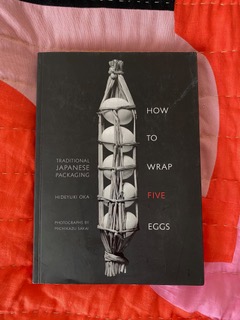
What has brought you the most comfort & joy over the last few months?
A drink with ice at 6pm.
Do you listen to music as you work?
While quilting we have been audibly reading books that we have been meaning to read for years.
What’s coming up next?
In June we have our first major solo gallery exhibition at Glasgow Print Studio as part of Glasgow International – which runs until 31 July. It’s a fantastic space and we are delighted that our quilts will finally be able to be seen in the flesh. We find that they reproduce well but the materiality and details within them tend to be lost, and these are so much a part of what we do. In August, as part of the Visual Arts Programme at Mount Stuart on Bute, we have been invited to exhibit the quilts in the main house. This will be the precursor to a community led project we have planned there for the autumn. We will be working with islanders to make a collection of quilts, using the landscape and architecture of the island as the starting point – something we have been keen to explore for a while. In September we have a show planned with Gallery Linn Lühn in Dusseldorf, which will run concurrently with a show in Berlin with Tanya Leighton Gallery. Between times we are working on a couple of exciting commissions.
